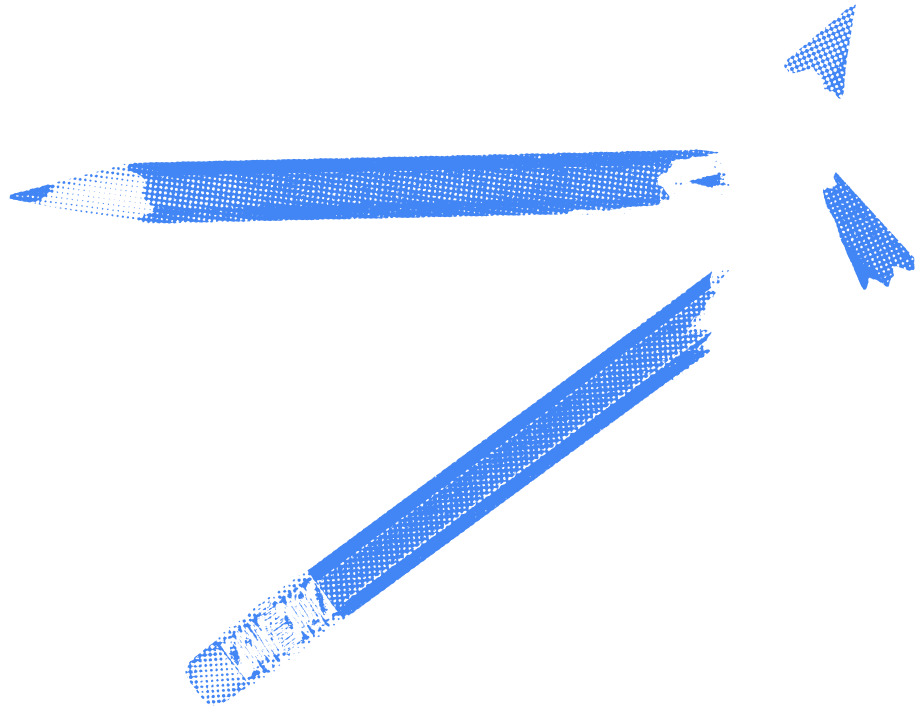Naomi Stead is Head of Department and Professor of Architecture at Monash University, and has been an academic in architecture since 2001. She is also a founding member of Parlour, a research-based advocacy organisation working to improve gender equity in architecture and the built environment professions.
Naomi Stead
The architecture of wicked problems Interview by Shantel Wetherall
SW: You co-authored an article that was published by Architecture Australia in August, 2020, that states, "Our industry is culpable in the climate crisis" Why did you choose that word in particular and why do you think it's important to engage in those terms?
NS: Well, I think the short answer is that our survival depends on it.
SW: Yes.
NS: We just have to... we don't have any choice. My discipline is architecture, which is a funny kind of discipline. It's an elite practice which tends to serve elites, but architects are invariably extremely egalitarian and devoted to the common good. So you have very progressive, amazingly creative and effective design professionals who are often at odds with their clients. Also, the legacy of poor buildings which have hugely high embodied energy, they take too many resources to build, they get knocked down too quickly.
Architecture is absolutely culpable in the sense that it produces vast amounts of waste. It uses vast amounts of energy. It becomes a public health issue too when you think of architecture at an urban scale, like places being designed where people have to drive to access services. So all of these kinds of issues, architecture touches upon all of them.
However, many architects don't have a lot of agency in the decisions about what they're designing. Invariably that comes from whoever's paying for the building, so architects are in this really tricky position. They tend to be extremely progressive on these issues, and so is architecture as a profession. The Architects Declare movement is a really strong, powerful movement, so there is a huge level of engagement with these issues in architecture. The question is, how do you leverage the bits of agency that you have to make a change? And that continues to be a really tricky thing.
SW: That is, essentially, a position that many people who work in design disciplines are in—having to separate their professional and private values. Do you think that is still a valid approach?
NS: Every day I see people who are trying to bring them into convergence, the professional (the work that one is obliged to do) and the person (the work that one values and believes in). Where they are divergent, people are trying to bring them into convergence, which I think is necessary if you're going to try and maintain your integrity, your sense of self, and your ability to sleep at night. It is tricky because I think people early in their careers often have less choice and less possibility. As you get older and maybe have a bit more agency, you can make those kinds of choices. But of course, that's a very privileged thing to say, because if you really need the money you don't have those choices. Not everybody has the same degrees of agency.
But I do think that people are increasingly trying to live their values professionally as well as personally. My partner, for example, works for a large organization in communications, but she's starting an employee activist group, bringing together a collective of people advocating for action on climate change. Sometimes you can only do small things. Sometimes you can really do big things. And I guess one of the key things that architects have been able to do historically is turn down commissions. So they choose not to do the detention center or the corporate headquarters.
SW: The highway through the sacred trees…
NS: Well, exactly. But of course, as soon as you do that, you're giving up a certain commercial possibility.
SW: Is there also an argument that you're quitting the field? Passing the buck to another person.
NS: People say, ‘at least I can do it better’. I can do it less badly, but I don't know... If you want to engage in advocacy or activism, at some point, you always have to decide whether you're going to try and do it from the inside, from working within an existing system, or by lobbing stones from the outside. It's not a binary of course, but just for the sake of the argument.
I've always thought you could more effectively work from the inside, and in fact, you can use certain Trojan Horse strategies. As a feminist, I think that you can smuggle feminist politics into the most prosaic and mundane institutional settings and make them so, because you've snuck them in.
So I believe in working from within systems because I think in many ways it's much more effective than the kind of activist irritant who makes trouble from the outside. However, there's a difference between working from the inside in an organization that's basically neutral or mild and the climate activist who works for ExxonMobil. When do you become complicit? When are you part of the problem? I think that is a really difficult decision that people need to make for themselves. We're all complicit from one stand-point because we're living this life.
SW: When you look into the future and imagine the architect of 2050, what do you hope that person looks like?
NS: Well, I guess I hope that person looks more like a landscape architect.
SW: Say more, I love that.
NS: We need more ecological thinking across the board in every practice and discipline, I would say, but particularly also in architecture. We need to think of cities and people in ecologies more than the human world. I think of that person as being a holistic ecological thinker who brings together natural and artificial processes in a way that are not extractive and exploitative and destructive of the world that we have.
Who wants to be in the center anyway?
Who wants to be normal?
Not me.
SW: I think we need to talk about first principles, because we can't talk about career paths without them. In the article mentioned earlier, you discussed and highlighted the importance of soft skills versus technical skills. Could you tell me more about that?
NS: It comes back partly to this question about communication and rhetoric. I really love the concept of rhetoric as the art of persuasion. And I think that architects are very good at rhetoric, visual rhetoric, and design-based rhetoric, creatively. And that is one of the key things that I think is going to be needed. It is needed now, and it is needed going forward for advocacy and activism and many other things. You couldn't say that was a hard technical skill. It's basically part of the humanities.
Architecture has historically been a bit of a boys club, it has to be said, and so-called soft skills have been undervalued literally because they were seen as ‘soft’ and not the kind of ‘manly’ technical skills.
SW: The margin often becomes the next wave. The brilliant writer and academic Chelsea Bond recently reassured me that the best work often happens on the margins because you have constraints and you're always problem-solving around them. You become whip-smart and very capable.
NS: I totally believe that. The periphery is absolutely the place to be. I've conceived of that myself in many ways. I suppose it doesn't look like I'm on the margin, because I’m here in this position of power in a ‘group of eight’ university, but I certainly think of myself as being on the margin. I'm a bit of a weirdo as far as architectural practice, as far as my research profile, because I do too much stuff. I don't do one thing in incredible depth, I do 50 things and make leaps between them—interdisciplinary leaps.
There's also a kind of persona question. For me as a queer kid growing up, I was always on the margins, it was just the way that I felt that I was. It was my position in the world, and that can be very hurtful when you feel like you're excluded and when you're on the outside. Then as you get older, you think, ‘Oh, this is actually where I want to be. I don't want to be at the center. I want to be on the margin,’ because you can have, let's say, an oblique glancing approach to questions.
In terms of my disposition, I'm very impatient with lazy orthodoxies. If you're on the edge of things, then you're less likely to fall prey to those kinds of received ideas. It's exactly, as you say, I think you're obliged to be, but it also gives the opportunity to be more creative. Who wants to be in the center anyway? Who wants to be normal? Not me.
SW: There are lots of predicaments, but do you think there are any exciting opportunities for architects and creative professionals at the moment?
NS: I think there are actually. We have to have hope otherwise what is there? I do genuinely believe that architects and other creative design professionals really do have a role to play. It might not be in designing buildings. The design of buildings is not all of architecture. It might be about imagining other possible futures, or it might be dreaming other possible futures into reality, or it might be about visualizing and catching the imagination, and literally designing hope as in showing that there could be other ways that could be viable.
Architects are exceptionally good communicators visually, they're not always good at speaking about their work or writing about their work, but they can convey ideas graphically and visually in a way that can totally capture the imagination and be incredibly exciting. And I think they can also really play an important role in integrating other disciplines. So people working in other fields: scientists, the humanities folk, I think architects and creative professionals more broadly can really be at the center of that. They can synthesize complex inputs, but also contradictory ones. This is at the core of design, that you can take in a whole lot of contradictory or complex and extremely difficult inputs and then synthesize them into a solution, or proposition.
So I think that architects and designers can really be at the center of solutions into the future, not necessarily in the design of buildings. Of course it's essential that they are able to think spatially and they can spatialize questions and problems, and they can think synthetically as well, bringing together these different disciplinary bodies of knowledge. But I think it's the ability of creative professionals to cope with wicked problems, which let's face it, some other disciplines really can't cope with, which will be the thing that will help get us through.
Explore more
dr sanah ahsan: the practice of care and freedom against systems of domination
erika soto-lamb: challenging domination through presence
jimmy smith: on being a nathan
dr tsedale melaku: examining allyship
aries moross: creating inclusive work
royce akers: creating inclusive teams
shantel wetherall, aries moross, royce akers, nooky and felicia foxx: how to design leadership for change?
we are warriors: nooky & ben miles, ecd r/ga
john c jay: creating connections
mama alto: ways to approach boundary setting
africa brooke: three steps to setting boundaries
aries moross: know your worth and maximise your value
caroline casey: with labels come limits
takunda muzondiwa: hold onto your heritage
jimmy smith: stay rare
blair imani: the tough gets going
cheryl maas: find your unstoppable
kumi tominaga: the upside of discomfort
laura jordan bambach: feel the fear, and do it anyway
tea uglow: if the system doesn't work for you, hack it
charlie craggs: how i tackled bigotry
sandra bold: how i started a movement
bejay mulenga: how i met the queen at 21
light watkins: finding meaning through meditation
robett hollis: lead the movement you wish existed
alma har'el: liberate talent discovery
liz jackson: the original hackers
ete davies: leave no one behind
rare community: reframing allyship
takunda muzondiwa: a spoken word poem on allyship
dr sanah ahsan: psychologist & poet
erika soto-lamb: vice president, social impact strategy, showtime/mtv entertainment studios at paramount global.
jimmy smith: founder, amusement park
dr. tsedale melaku: sociologist, assistant professor of management at the zicklin school of business, baruch college (cuny), and author of 'you don’t look like a lawyer: black women and systemic gendered racism'
aries moross: illustrator & art director
shantel wetherall: writer, podcast host of 'hey aunty!'
royce akers: operating partner, mash
nooky: indigenous rapper
felicia foxx: performing artist
we are warriors: nooky & ben miles, ecd r/ga
john c jay: president of brand creative for fast retailing, owner of uniqlo
mama alto: jazz singer & ceo transgender victoria
africa brooke: consultant & writer
caroline casey: activist & management consultant
takunda muzondiwa: spoken word poet
blair imani: author, historian & activist
cheryl maas: pro-snowboarder
kumi tominaga: head of japan, creative shop @ meta
laura jordan bambach: president & chief creative officer at grey
tea uglow: creative director
charlie craggs: actress, activist, and author
sandra bold: cco at wunderman thompson benelux
bejay mulenga: entrepeuneur, founder ceo, creative consultant and public speaker
light watkins: speaker, podcaster, author, teacher
robett hollis: ex-professional snowboarder, entrepenuer, speaker and advisor
liz jackson: founder of the disabled list
malik al nasir: author, performance poet and filmmaker
tara mckenty: co-founder of rare with google
stefanie digianvincenzo: co-founder of rare with google
lo harris: multidisciplinary artist & illustrator
reggie black: artist
claudia chinyere akole: artist & illustrator
gemma o'brien: illustrator
oliver costello: director of jagun alliance aboriginal corporation
arieta tegeilolo talanoa rika: writer, storyteller & founder of talanoa
reg flowers: theatre professional and teaching artist
sulaiman khan: founder and chief radical officer of this ability limited
oliver costello our work is creation work as told to shantel wetherall
arieta tegeilolo talanoa rika the foundation of recovery interview by shantel wetherall
reg flowers flourishing on the fringe interview by shantel wetherall
naomi stead the architecture of wicked problems interview by shantel wetherall
sulaiman khan and naheed rubi khan the way forward interview by chris kenna
still i rise by lo harris
adcolor leaders mantras by reggie black
rare mantras 2022 by claudia chinyere akole
rare mantras 2021 by aries moross
rare mantras 2020 by gemma o'brien



